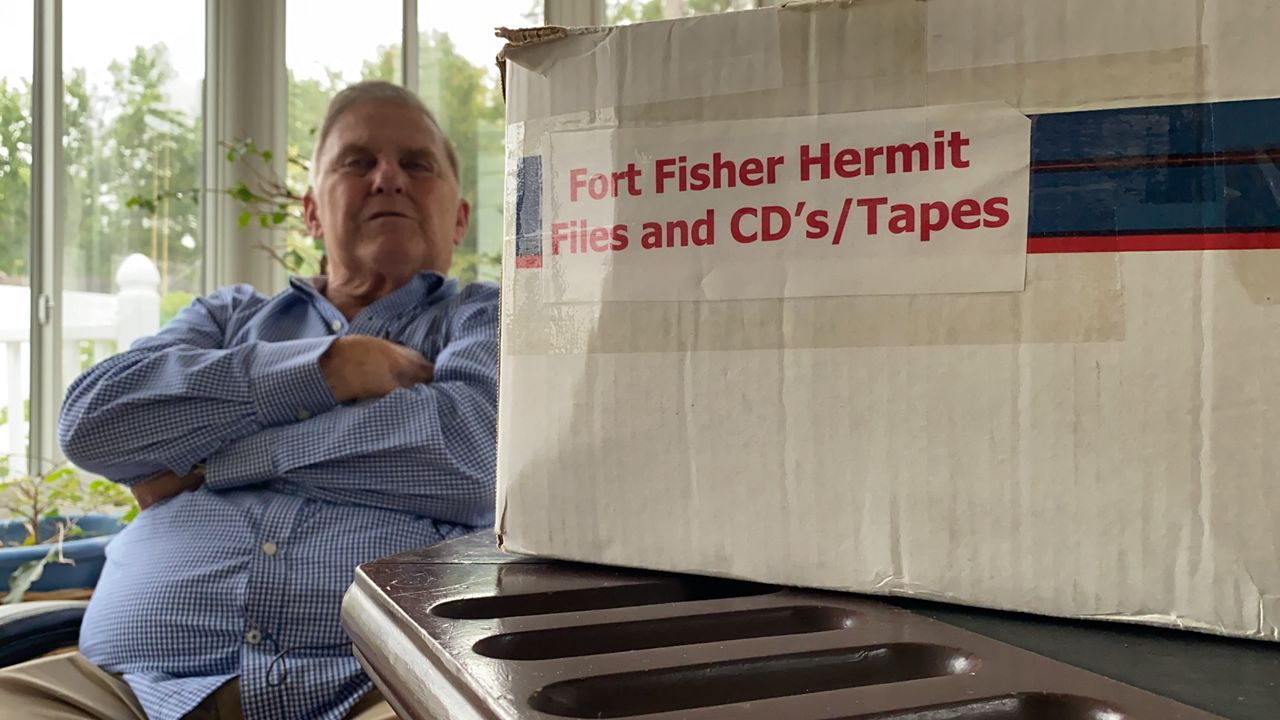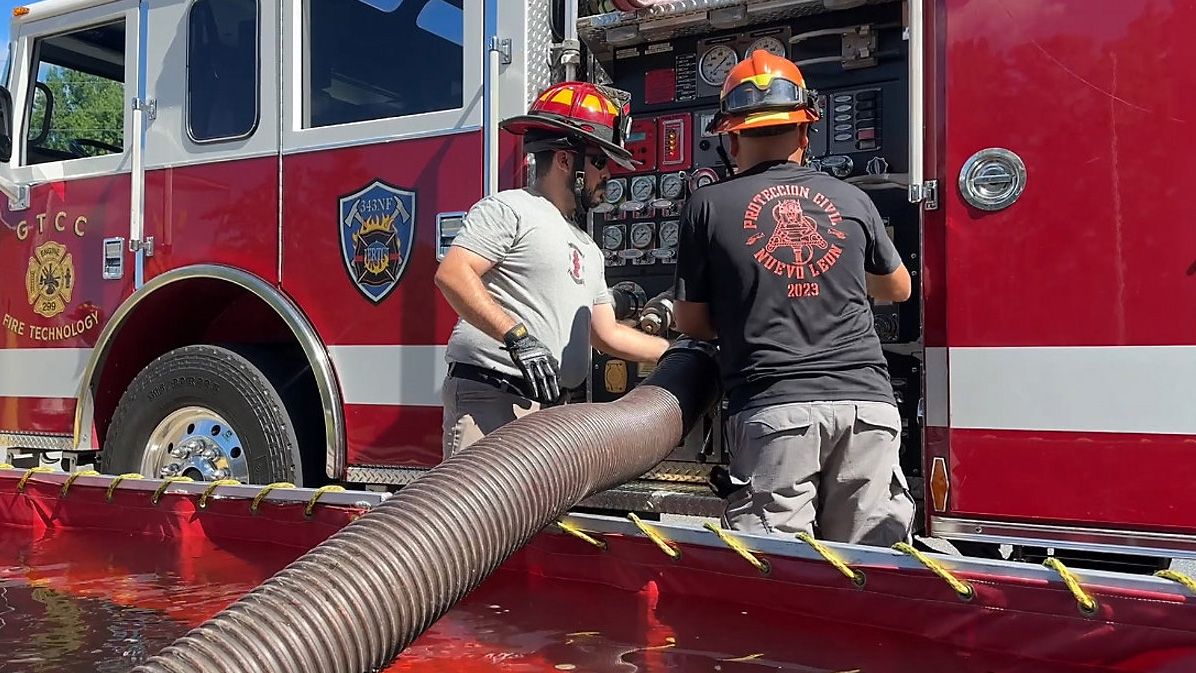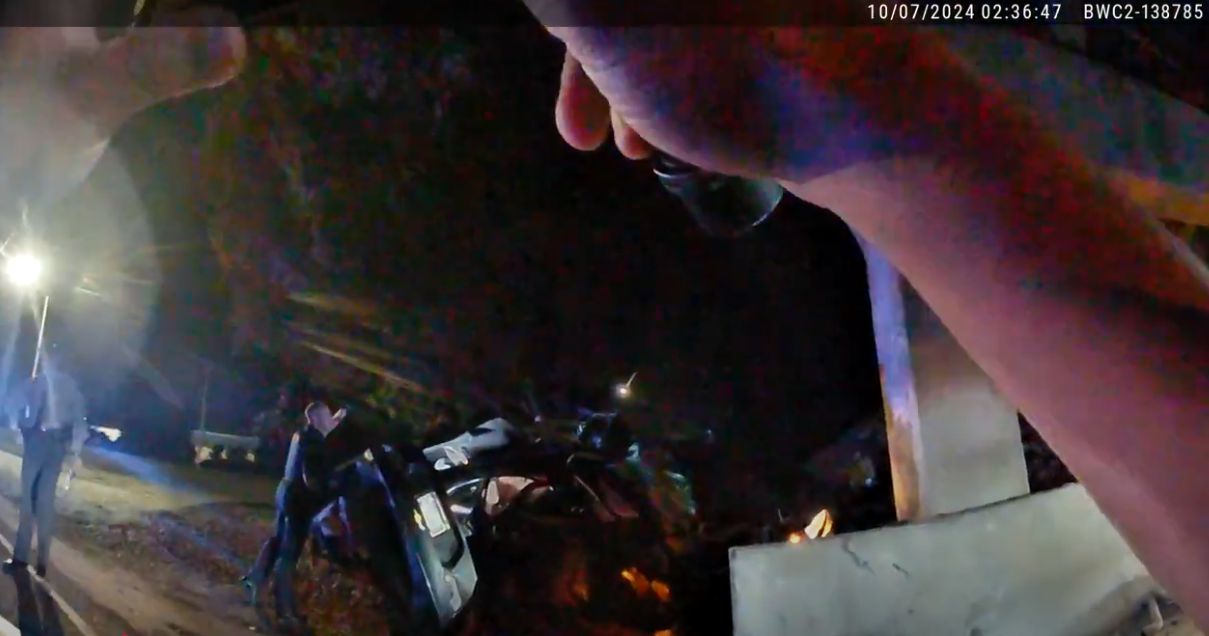FORT FISHER, N.C. — It's been 49 years since Robert E. Harrill, better known as the Fort Fisher Hermit, was found dead inside the old World War II bunker that he called home, and yet people still have questions about what ended his life.
Fred Pickler first met Harrill as a Boy Scout on a camping trip at Fort Fisher, but as he grew up, he became fascinated with the Hermit and ended up befriending him.
Pickler was in the process of documenting Harrill's life in pictures when he got the phone call early one morning that Harrill's body had been found inside his bunker.
“I went in, the first thing I saw, he was laying on his back and his arm was up like that,” Pickler said. “He was dead. Obviously. He was covered with sand. He had cuts on his arms, on his face, like he'd been drug on the ground.”
Pickler was the crime scene investigator with the sheriff's department at the time, and he processed the scene like he would any other – taking photographs, collecting evidence and filing his report. Pickler said he was immediately suspicious of foul play.

“He didn't just fall in that bunker,” Pickler said. “Somebody threw him in there and after they beat on him and assaulted him.”
When he suggested an autopsy after finishing at the scene, his request was denied, and the coroner listed the official cause of death as a heart attack. Pickler believes the heart attack was caused by individuals who ambushed Harrill that fateful night.
“I truly in my heart of hearts, I don't think they went down there to kill him,” Pickler said. “They went down there to mess with him. They were too young, too immature to understand what they were going to do. The result was a man died, and they're saying 'oh boy, I've committed a big one now' and they know it.”
Tire tracks, evidence of a struggle and an abandoned shoe place others at the crime scene on the night of Harrill's death, but the question is whether they are responsible. Pickler places the blame squarely on the shoulders of three individuals, who he believes have hidden their secret for the majority of their lives.
“I started profiling these guys,” Pickler said. “Two of them were bullies, they were drunks. The third one was easy to manipulate to do whatever they wanted to do. They were heard saying it at the beach one time 'Let's go screw with the Hermit.'”
For the past half century, Pickler has struggled to put Harrill's death behind him and let his legacy be enough, but he said he feels like justice hasn't been served, and he can't rest until this mystery is solved.
“I promised his son 'I will do it. I will pursue this thing until I find who killed your father so he can rest in peace,'” Pickler said.
He said he feels closer than he's ever been before to cracking this case wide open.
“I want them to come forward and confess to what they did — admit to what they did,” Pickler said.
For the community at Fort Fisher, the Hermit wasn't just a homeless person living in an abandoned bunker – he was a living legend, and his death isn't something that can simply be written off.









